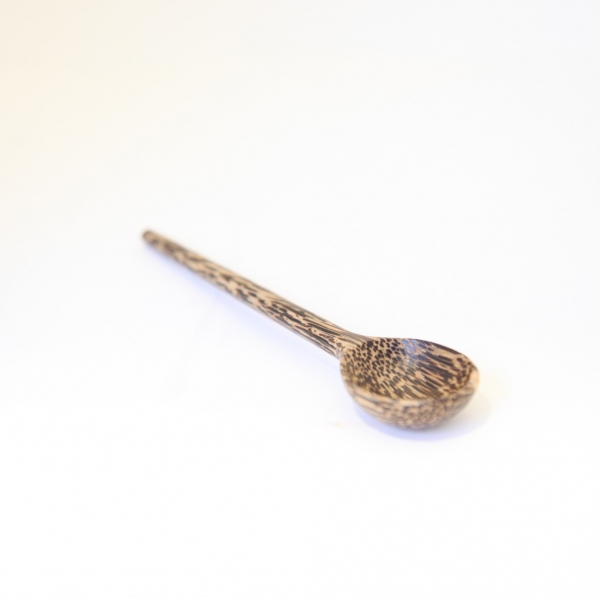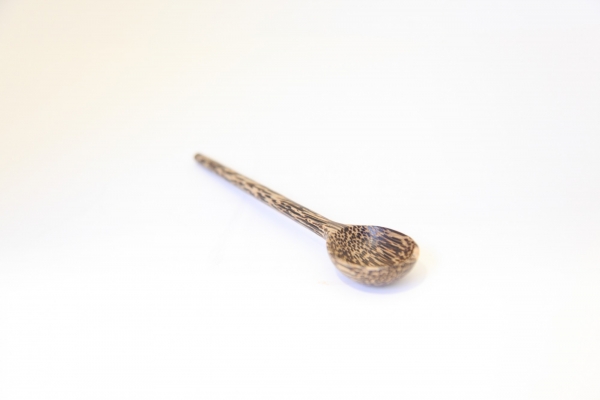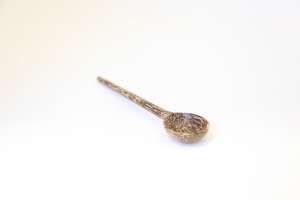
As its name suggests, zebrawood (otherwise known as zebrano or zingana) is easily recognisable because of the zebra-like, starkly contrasting stripes in its grain. Depending on the direction in which the wood is cut (flatsawn or quartersawn) those stripes can either be broadly uniform, as shown by our zebrawood knife, or chaotic and wavy, as seen in the bowl of this zebrawood spoon.
Because of its bold pattern, zebrawood was often favoured in highly-lacquered Art Deco furniture where it was inlaid in intricate geometric patterns alongside its more expensive, and now endangered, tropical hardwood cousins ebony and rosewood. The Microberlinia brazzavillensis tree that this wood comes from is native to the lowland forests of Cameroon in West Africa, and is currently at threat of extinction as a result of illegal logging and the expansion of palm oil plantations and oil mining. These days zebrawood is mostly used to make decorative items like sunglasses, custom furniture or guitars where its distinctive stripes can be shown to full effect.
As well as its distinctive look, zebrawood is also said to have a characteristically unpleasant smell when it is worked: one seasoned woodworker commented that it “smells like poo when you cut it with a saw” and another described it as bringing to mind “a cat box that should have been changed a week ago”.
Zebrawood is a relatively strong, hard and stiff wood with a coarse texture, open pores and an interlocked grain (where the fibres in a tree don’t run straight up and down, but grow in lots of different directions). This interlocked grain can make zebrawood a challenge to work with, particularly when it comes to planing or surfacing the wood. Generally woodworkers aim to plane in the same direction as the grain - described as like stroking a cat from head to tail - in order to avoid ‘tear out’, where the tool rips out sections of wood rather than cutting through the grain. However, when the grain runs in lots of different directions this can be very challenging and relies on the maker ‘reading’ the wood’s grain to avoid unsightly, jagged divots.
Sample ID: 1264
Add materials you find interesting to your own selections.
Use the  button to select a material and get started.
button to select a material and get started.

